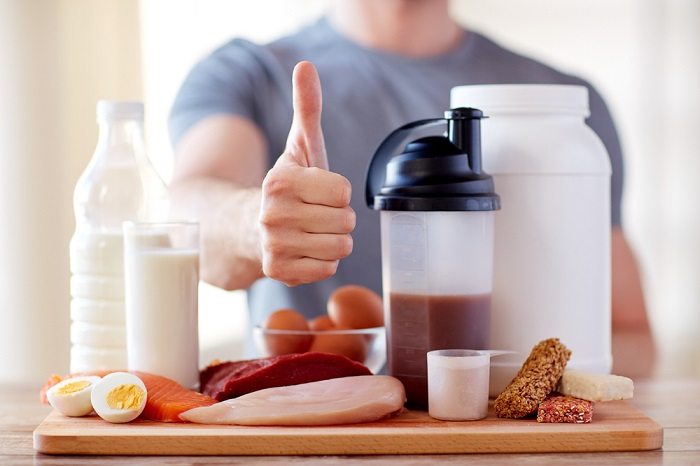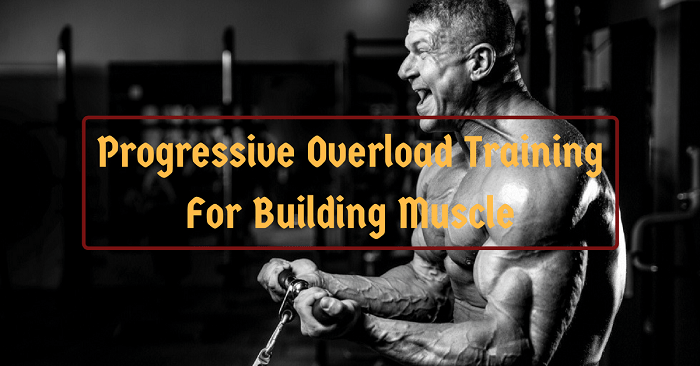We all have our own unique likes and dislikes, and when it comes to exercising and working out, that becomes especially apparent. Some people, for example, like running on treadmills, whilst others simply can’t stand it. Some enjoy cycling, whilst others prefer swimming.
Even bodybuilders have their own unique preferences for when they’re training because contrary to popular belief, not all bodybuilders have to follow the exact same workouts as Mr Olympia in order to build muscle. Some bodybuilders for example, prefer 5-day splits, whilst others enjoy full-body workouts. Some enjoy push/pull days, whilst others enjoy high intensity training. The message we’re trying to portray here, is that each person is unique and as such, will have their own unique likes and dislikes.
One form of training however, that is proving not only popular, but incredibly effective as well, is progressive overload training and it is this very form of training which we’ll be taking a more in-depth look at right now. Contained within this article you will find out exactly what progressive overload training is, a typical example, and a few ways in which you can actually create progressive overloading on your muscles yourself. So, without any further hesitation, let’s learn more about progressive overload and exactly why it’s considered so effective.
WHAT IS PROGRESSIVE OVERLOAD TRAINING?

Progressive overload training is basically a training principle which makes reference to constantly increasing the physical demands placed upon a person’s musculoskeletal system to help them to increase their endurance, their muscle strength, and their muscle size in the process. Put very simply, in order for a person to become stronger, bigger, and fitter, they will need to ensure that they are constantly and continually working their muscles harder and harder with each workout, lifting more and performing more than their previous workouts.
The body has a fantastic knack for adapting to certain situations and surroundings, and when training, that is no different. Remember, when we exercise, although it’s beneficial, it still places the body under s great deal of stress, and as a result, the body tries to protect itself.
As a result, it adapts and builds up a resistance, which is why people begin to find themselves progressing less and less as they follow the same exercises and routines for several weeks. If then, your workouts stay the same, or even if they become easier, you may find yourself stalling and not only failing to grow, but you may even regress and lose your gains.
TYPICAL PROGRESSIVE OVERLOAD EXAMPLE

Now we’ll look at an example of progressive overload to help give a better idea of exactly what it involves.
Say for example, you can bench press 135lbs for a maximum of 8 reps. As time goes by, those 8 reps will feel and become easier and easier. Your chest will have grown and you will have become stronger, but now you will hit a plateau in terms of growth and development. To help shock the muscles into new growth, you will need to increase the weight you place on the barbell, aiming for 8 reps for each workout, but with slightly more weight each time.
HOW TO CREATE PROGRESSIVE OVERLOADING ON YOUR MUSCLES

Now that we know what progressive overload training is, plus what a typical example, may be, we’ll now look at a few ways of creating progressive overload training upon your muscles:
#1 More Sets
It’s easy to say that each workout you should try to lift more weight as you will be getting stronger, but in reality, that will only take you so far as you will hit a natural plateau, otherwise you’d be the strongest person in the world within a few months.
Another great way of creating progressive overload training on your muscles, is to try to perform more sets for each exercise. Say for example, you usually perform 4 sets of 8 reps, try 5 or 6 sets of 8 reps per exercise instead.
#2 More Weight
Although you won’t be able to keep adding weight to each exercise forever, to begin with, you will see some pretty impressive strength gains if you try this protocol, so give it a go.
Say for example, you were struggling to hit 8 reps with a certain weight, but now those 8 reps feel easy, this is a sign that you’re ready to increase the weight slightly, so add a few more pounds on there, and again, aim for 8 reps.
#3 More reps
Another very effective way of creating progressive overloading is to increase the amount of reps you perform per working set. Rather than 8 – 10 reps, aim for 12 – 14 reps instead, or even more than that maybe. The idea is to fatigue your muscles and work them to absolute failure. You may even wish to perform some forced reps with a spotter, or try some rest-pause techniques for good measure. As long as you’re doing more than you did previously, you will see the benefits you were hoping for.
#4 More Exercises
When people pair up two body parts per workout I.E Chest and Biceps, they will often perform 3 chest exercises, and 3 bicep exercises. If you’ve been doing this, try adding another couple of exercises in there, I.E 4 chest and 4 bicep, or even 5 chest and 4 bicep exercises. See this article to more know How Many Exercises Per Workout?
#5 More Training Sessions
Another very simple and very effective way of creating progressive overloading on your muscles, is to basically increase the frequency of your training sessions. Progressive overload is all about improving, and a great way of doing just that is to increase the number of training sessions that you take part in each week.
If, for example, you have only been training for 3 days each week, you may wish to consider training for 4 or 5 days per week instead. That extra day or two will obviously place your muscles under increased stress, which in turn, will ensure that they respond to the additional training stimulus and grow. Even if you train 5 days per week, you may wish to consider training twice per day on some days.
Don’t worry about overtraining, as long as it is a temporary measure that only lasts for a few weeks, you won’t become burnt out, but you will see and feel some pretty impressive results.
WHAT ABOUT YOUR DIET?

As you will be taking part in progressive overload training sessions in order to build lean muscle mass, increase your strength, and possibly even burn body fat in the process, you will need to be very careful when it comes to your diet. Building muscle is considered to be a combination of around 70% diet, and 30% training, so if you get your diet wrong, you aren’t going to make any real improvements at all.
Here are a few diet principles and basics regarding progressive overload training!!!
#1 Make Sure You Get Enough Protein

For anybody looking to increase their muscle mass, protein is considered to be the most vital macronutrient of all, and rightfully so. Protein is vital for the growth and repair of muscle tissue, not to mention the fact that it assists with cellular health and function in the process.
Aim for 1 – 1.5g of protein per pound of bodyweight, make sure you consume no more than 40g of protein per meal (any more would be a waste as the body wouldn’t be able to use it in time) and make sure you get the majority of your protein from clean and healthy sources. Some common examples include: lean meat, seafood, fish, organic nuts, organic eggs, and protein supplements.
#2 Choose Your Supplements Wisely

Bodybuilding and supplements go hand in hand with one another, and for good reason too. When it comes to progressive overload training, you can be pushing your body as hard as you like, but without the right nutrients, it just isn’t going to grow as effectively as you may have hoped.
Always go with supplements from trusted suppliers, and only use them in conjunction with a healthy diet, and smart training routine. Some recommended supplements for a progressive overload training routine, include: winstrol, creatine, whey protein, multi-vitamin, vitamin c with added zinc, trenbolone, omega 3 supplements, and casein protein.
#3 Eat Clean and Healthy Produce

Finally, even if you claim to be “bulking” that is still no excuse for not eating clean and healthy produce, so make sure you clean up your diet and only consume fresh and healthy produce. You can reward yourself with a treat meal now and then, but 90% of the time, your food and drink intakes should come from fresh and natural produce.

Hi there,
I’m Gregory Brown, chief editor at ConstructMuscles.com
I spend half of my time in this blog while the other half on being physical fitness trainer. Believing in the great benefits of bodybuilding and fitness to the body, I’ve been motivated to become a fitness enthusiast. It also was what gave me the self-confidence and assurance within myself both physically and psychologically.

